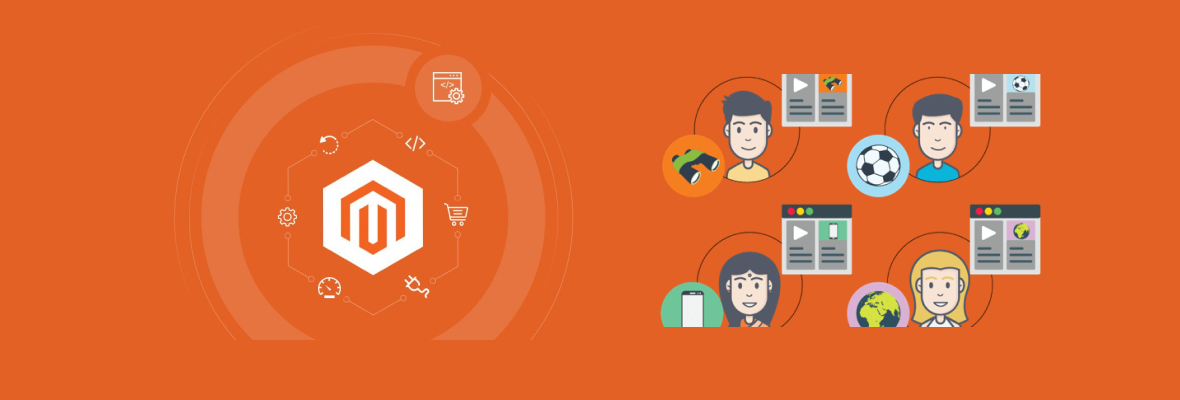Customers are overwhelmed with hundreds of marketing messages per day. For B2B decision-makers, this is no exception. Someone like a CIO has the decision responsibility to acquire a managed print service or network infrastructure for their business and could be contacted by sales from a dozen different vendors just for one solution on any given day. In an attempt to follow trends, many businesses try to reach too broad a marketing segment, which can make marketing messages feel impersonal. Marketing campaigns that are pushed to a wide range of people become lost in the mix of other campaigns, especially when your potential buyer is being bombarded by all your competitors at the same time. How can we solve this? By focusing on two types of marketing strategies, segmentation, and personalization. Clearly defined segmentation and personalization strategies can help your business better reach your niche.
What are segmentation and personalization, and why should these strategies matter to you?
Segmentation is a marketing strategy that breaks down a broad target market into smaller groups of customers, businesses, or countries that are thought to have common needs, interests, and priorities. The goal of using segmentation is to get a better idea of how like-minded people act and interact. Analyzing this information can help you design and implement a strategy to target those people.
There are multiple ways you can segment B2B customers. The most common ways are:
- Firmographics: Business size, company location, industry, technologies used, etc.
- Customer tiering: How well the customer matches the goals of your own business
- Needs-based: What your customers are looking for in a product
- Customer sophistication: Product or industry acumen
- Behavioral: The ways your current customers interact with your products or solutions
Segmentation is important in order to communicate your message effectively. The type of segmentation to be used depends on the overall goal of your marketing strategy. It’s crucial to remember that everyone and every business has a unique perspective when it comes to B2B marketing. This is why you should be not using a one-size-fits-all method when it comes to your clients.
Personalization is often referred to as one-to-one marketing or individual marketing. It is a marketing strategy based on using data to tailor your marketing message and targeting to be as relevant for those Personas who make or influence purchase decisions of your products or solutions. Segmentation focuses on a group of individuals with common characteristics, while personalization focuses on a single person.
When using the personalization marketing strategy, you should remember the 4 R’s of Personalization:
- Recognize your current and potential customers’ profiles
- Remember their history, including how they act, what they browse, and what they purchase
- Recommend the right products, offers, or content based on their actions, preferences, and interests
- Relevant delivery based on who they are, where they are located, and what time of the year it is
A good start is to examine your current ideal customers and look at the profiles of those decision-makers or influencers for your products or solutions. Once you have that profile clearly outlined, you know the look-alike customers you should be targeting to optimize your marketing effectiveness. However, personalization really is viewed as a hypothesis until it is proven with the data you collect. You can collect data in various forms. The most popular form of data collection is A/B testing. A/B testing, sometimes referred to as split testing, is comparing two versions of a web page, call to action button, advertisement, etc. to see which one performs better. You can learn more about your customers, their preferences, and what gets their attention by analyzing which is the better performing variation. It is also why it is important to review and update your Persona profiles as you gain more knowledge of your ideal customers.
Another form of testing is to let your customers tell you about themselves. This can be done by asking your customers to fill out a quick, multiple-choice questionnaire on your web page. For instance, you can ask your customers what industry they work in when they visit your web page. The results from the questionnaire can be used to help you learn more about the type of people visiting your website the most. From here, you can create campaigns around the results you’ve gathered from both forms of testing.
Personalization is important because customers value being treated as an individual. With personalization, you want to speak your customer’s language, match their expectations, and address their concerns to see an increase in conversions.
So, which marketing strategy should you use for your business? Segmentation and personalization are both essential to amplify your marketing message and connect with your customers. By using segmentation and personalization in your marketing strategy, your business will have an advantage when it comes to connecting with your current and potential customers. Breaking down your customers into smaller segments can help market your product or service more efficiently. Applying personalization can create an empathetic connection with your audience.
The Growth Engine team are experts in helping businesses to develop tailored customer personas and segmentation for your business to optimize your ability to reach and convert a customer. Contact us today to book a complimentary consultation session to find out how we can improve the effectiveness of your lead generation and demand generation efforts.








